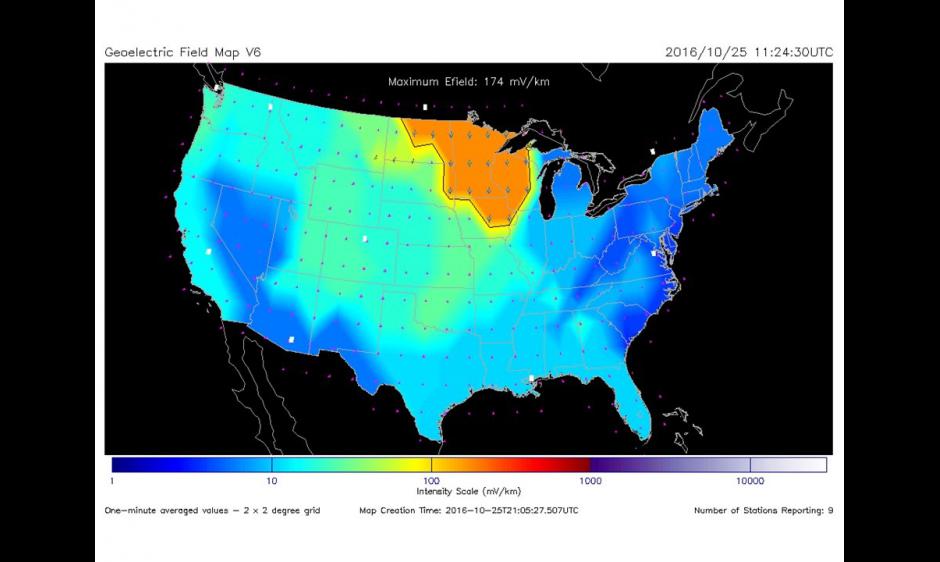
The NWS Director, Dr. Louis W. Uccellini, announced a new space weather model, the Geoelectric Field model, today. It was developed by NOAA, in collaboration with the USGS, NASA, and Natural Resources Canada, to provide real-time situational awareness of regional electric fields generated by disturbances in Earth's magnetic field.
Access to the Geoelectric Field model calculations will provide key situational awareness to electric grid operators and allow for the development of important tools for the power grid control centers to mitigate the impacts of geomagnetically induced current (GIC). GICs have the potential to severely disrupt power grid operations, which can result in voltage collapse and a blackout. The model will be running experimentally starting this fall and expected to be operational in 2018.